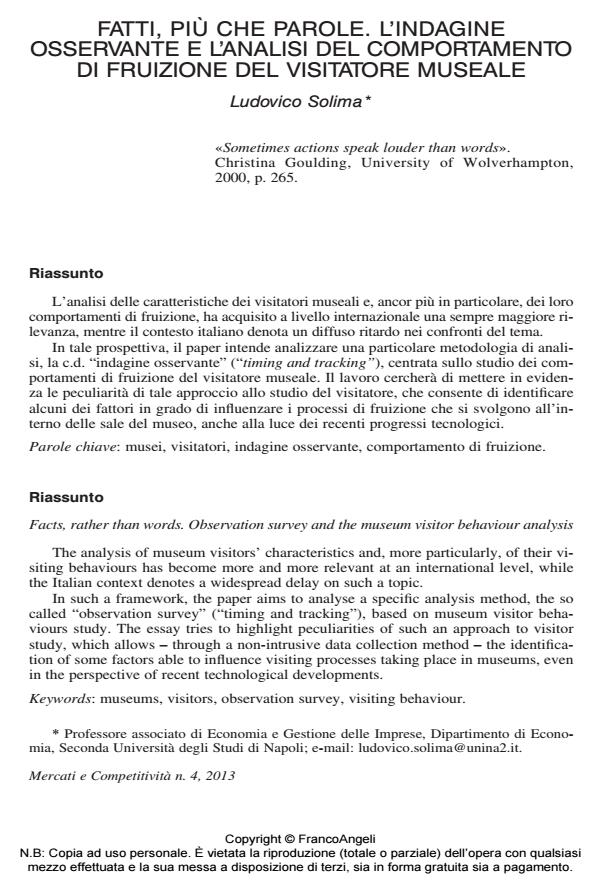Facts, rather than words. Observation survey and the museum visitor behaviour analysis
Journal title MERCATI E COMPETITIVITÀ
Author/s Ludovico Solima
Publishing Year 2013 Issue 2013/4
Language Italian Pages 23 P. 103-125 File size 1667 KB
DOI 10.3280/MC2013-004006
DOI is like a bar code for intellectual property: to have more infomation
click here
Below, you can see the article first page
If you want to buy this article in PDF format, you can do it, following the instructions to buy download credits

FrancoAngeli is member of Publishers International Linking Association, Inc (PILA), a not-for-profit association which run the CrossRef service enabling links to and from online scholarly content.
The analysis of museum visitors’ characteristics and, more particularly, of their visiting behaviours has become more and more relevant at an international level, while the Italian context denotes a widespread delay on such a topic. In such a framework, the paper aims to analyse a specific analysis method, the so called "observation survey" ("timing and tracking"), based on museum visitor behaviours study. The essay tries to highlight peculiarities of such an approach to visitor study, which allows - through a non-intrusive data collection method - the identification of some factors able to influence visiting processes taking place in museums, even in the perspective of recent technological developments.
Keywords: Museums, visitors, observation survey, visiting behaviour.
- Contributions Historical Documentaries on the Barcellona Area Filippo Imbesi, in SSRN Electronic Journal /2012
DOI: 10.2139/ssrn.2099123
Ludovico Solima, Fatti, più che parole. l’indagine osservante e l’analisi del comportamento di fruizione del visitatore museale in "MERCATI E COMPETITIVITÀ" 4/2013, pp 103-125, DOI: 10.3280/MC2013-004006